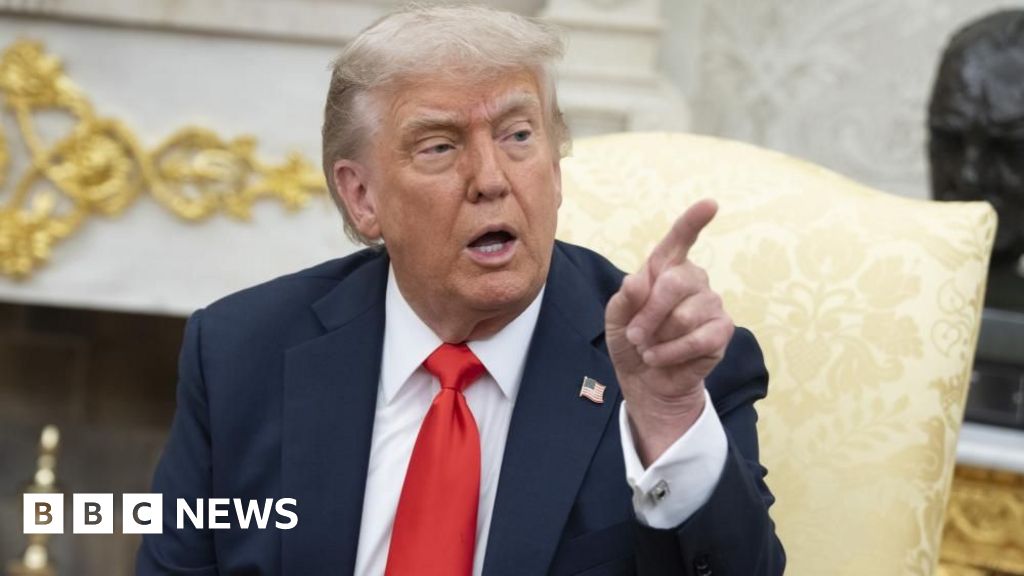Why were these 12 countries on Trump's travel-ban list?

Quick Read
**Trump's Travel Ban: Why These 12 Countries?**
Trump's travel ban targeted 12 countries based on supposed national security risks. The concerns revolved around issues with identifying citizens, sharing information, and general instability. Many of the countries faced conflict or lacked resources for proper vetting. The inclusion of several majority-Muslim nations sparked accusations of religious bias.
Trump's Travel Ban: Unpacking the Controversial List of Nations
In the early days of his presidency, Donald Trump enacted a travel ban that sparked international outrage and legal battles. The executive order, officially titled "Protecting the Nation from Foreign Terrorist Entry into the United States," restricted entry for citizens of several predominantly Muslim countries. But why were these particular nations singled out? The answer is a complex blend of national security concerns, data availability, and existing immigration laws, sparking heated debates that continue to resonate today.
Initial Justification: National Security Concerns
The Trump administration initially justified the travel ban by citing national security concerns. They argued that the listed countries posed a higher risk of terrorism and that their screening procedures were inadequate to properly vet individuals seeking entry into the United States. The order aimed to temporarily suspend entry to allow for a review and enhancement of these screening processes.
Specific concerns reportedly included:
Lack of reliable documentation: Concerns were raised about the authenticity and reliability of identification documents and travel records from these nations.
Information sharing deficiencies: The administration claimed that some countries were not adequately sharing information about potential security threats with the United States.
Terrorist presence: The presence of terrorist organizations within these countries was cited as a factor increasing the risk of individuals entering the U.S. with malicious intent.
The original list included seven countries: Iran, Iraq, Libya, Somalia, Sudan, Syria, and Yemen. This list was later revised and expanded.
Shifting Rationale and Legal Challenges
The travel ban faced immediate legal challenges, with opponents arguing that it was discriminatory and violated the Establishment Clause of the First Amendment, which prohibits government endorsement of religion. Lower courts blocked the initial version of the ban.
In response, the Trump administration issued revised versions of the order, attempting to address legal concerns and provide a more detailed rationale for the selected countries. These revisions often included removing countries or adding new ones based on evolving threat assessments and diplomatic considerations. Ultimately, the Supreme Court upheld a later version of the ban.
The Final List: A Closer Look
The final version of the travel ban, before being rescinded by the Biden administration, included the following nations:
Iran: Due to its status as a state sponsor of terrorism and concerns about its government's lack of cooperation on information sharing.
Libya: Citing the unstable security situation and the presence of terrorist groups following the civil war.
Somalia: Pointing to the ongoing threat posed by al-Shabaab, a terrorist group operating within the country.
Syria: Due to the ongoing civil war and the presence of numerous terrorist organizations, including ISIS.
Yemen: Citing the civil war and the presence of al-Qaeda in the Arabian Peninsula (AQAP).
North Korea: Included because of its government’s human rights abuses and its lack of cooperation with the United States.
Venezuela: Specifically targeting government officials and their families, due to concerns about corruption and human rights violations.
Myanmar: Added later because of the persecution of Rohingya Muslims.
Nigeria: Added due to concerns about terrorism, but restrictions were later eased to only apply to certain visa types.
Eritrea: Added due to concerns about identity management and national security.
Kyrgyzstan: Added over similar identity management and security concerns.
Sudan: Initially included, but later removed after improvements in its security cooperation with the U.S.
Beyond Terrorism: Other Factors at Play
While terrorism was the primary justification, other factors likely influenced the selection of countries. These included:
Existing Immigration Laws: Some countries were already subject to stricter visa requirements or other travel restrictions under existing immigration laws.
Diplomatic Relations: The administration's relationship with a particular country may have played a role, as evidenced by the inclusion of Venezuela.
Data Availability: The ability of U.S. authorities to obtain reliable information about travelers from these countries was also a consideration.
The Legacy of the Travel Ban
The travel ban remains a highly controversial chapter in American history. Supporters argued that it was a necessary measure to protect national security, while opponents condemned it as discriminatory and harmful to U.S. relations with the affected countries. Regardless of one's perspective, the ban highlighted the complex challenges of balancing national security with immigration policies and civil liberties.
The Biden administration rescinded the travel ban upon taking office, citing its discriminatory nature and its ineffectiveness in promoting national security. However, the debate over how to best secure the nation's borders while upholding American values continues. The legacy of the travel ban serves as a reminder of the delicate balance required when addressing these critical issues.






